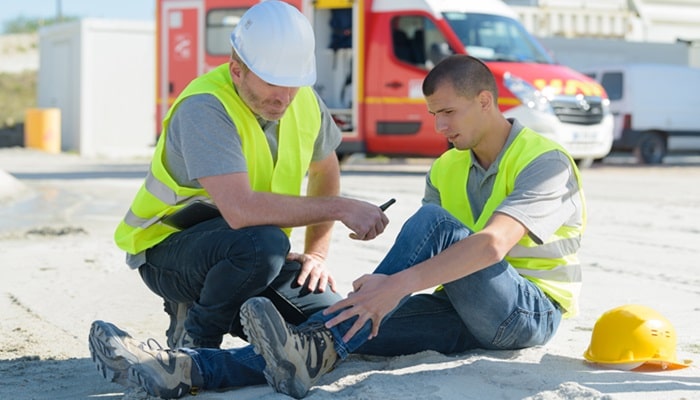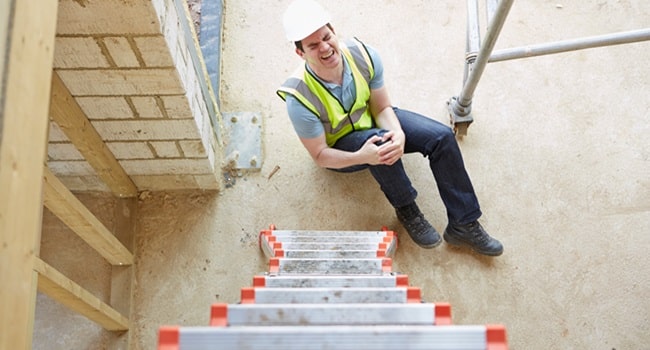Construction Site Injury: Understanding Liability And Compensation
Construction sites are bustling with activity. There’s heavy machinery, towering structures, and a constant flow of workers. And with all that activity comes risk, like construction site injury. Did you know that injuries on construction sites happen more often than you’d think? What happens when you or someone you know gets hurt? Who’s responsible? And […] The post Construction Site Injury: Understanding Liability And Compensation appeared first on World Construction Today.

Construction sites are bustling with activity. There’s heavy machinery, towering structures, and a constant flow of workers. And with all that activity comes risk, like construction site injury.
Did you know that injuries on construction sites happen more often than you’d think? What happens when you or someone you know gets hurt? Who’s responsible? And how do you get compensated? This post will look into those concerns. Read on.
The Dangerous Nature Of Construction Sites
Construction sites are inherently hazardous. Workers face risks every day, from falling objects to machinery malfunctions. Even passersby aren’t immune to potential accidents. It’s no surprise that construction ranks among the most dangerous industries.
But just because it’s dangerous doesn’t mean you shouldn’t feel safe. Employers and contractors have a duty to create a safe work environment. When they fail, accidents happen—and injuries follow.
Different Types Of Construction Site Injuries
Injuries on construction sites vary widely. Some are minor, while others can be life-changing. Here are a few common ones:
- Falls from heights: Scaffolding and ladders are essential tools. But they’re also common culprits in workplace falls.
- Struck by bbjects: Tools, debris, or equipment can strike workers unexpectedly.
- Equipment accidents: Malfunctions or misuse of machinery can lead to serious harm.
- Electrocution: With so many wires and power tools, electrical injuries are a real threat.
- Repetitive stress injuries: Long hours and repetitive tasks can wear down muscles and joints over time.
If you’ve suffered an injury, the first step is to get medical help, aside from seeking legal guidance from a construction accident lawyer and so on. Your health should always be the priority.
Who Is Liable For Your Injury
Liability can feel like a gray area. But understanding it is key to getting compensation. So, who’s responsible for your injury? It could be:
- Your employer: Employers must provide safety training, proper equipment, and a hazard-free environment. If they fail, they’re often held accountable.
- General contractors: They’re responsible for overseeing the site and ensuring safety protocols are in place.
- Subcontractors: If a subcontractor’s negligence caused your injury, they might be liable.
- Equipment manufacturers: Faulty or poorly designed equipment can lead to injuries. In these cases, the manufacturer could be to blame.
Sometimes, liability isn’t straightforward. Multiple parties could share responsibility. That’s why it’s crucial to investigate every angle and ask for assistance from legal experts like a personal injury lawyer.
Worker’s Compensation
If you’re a construction worker, workers’ compensation is likely your go-to option. It’s designed to cover medical bills, lost wages, and rehabilitation costs. The good news? You don’t have to prove your employer was at fault. As long as the injury happened on the job, you’re covered.
But there’s a catch. Workers’ compensation doesn’t cover everything. Pain and suffering? Not included. Long-term financial losses? Also limited. That’s where third-party claims come in.
When Third Party Claims Come Into Play
Third-party claims allow you to seek additional compensation beyond workers’ comp. These claims target parties other than your employer. For instance:
- Was a subcontractor’s negligence the cause? You can file against them.
- Did faulty equipment play a role? The manufacturer might owe you damages.
Third-party claims can cover pain and suffering, emotional distress, and other losses workers’ comp doesn’t touch.
How To Start Your Claim
Navigating a construction injury claim can feel overwhelming. But taking the right steps can make all the difference. Check out the following tips:
- Report the injury immediately. Notify your employer or site supervisor on the dot.
- Seek medical attention. Even minor injuries need professional evaluation. Medical records are crucial for your claim.
- Gather pieces of evidence like pictures, witness statements, and incident reports to strengthen your case.
- Work with a legal expert. A personal injury lawyer can guide you through the process and ensure you get what you’re owed.
What Compensation Can You Expect
The amount of compensation varies case by case. Factors include the severity of your injury, medical expenses, and long-term impacts on your life. Here’s what you might be entitled to:
- Medical expenses generally which range from hospital bills to physical therapy.
- If your injury kept you out of work, you can recover your lost income.
- Long-term disabilities might limit your ability to work. Compensation can account for that.
- Pain and suffering deserve acknowledgment as well and can be compensated for.
A lawyer can help you calculate the full extent of your damages.
Know What Your Rights Are In The Construction Site
Prevention is always better than cure. As a worker, you have rights. Employers are required to:
- Provide safety training;
- Supply protective gear like helmets and gloves;
- Maintain equipment properly;
- Follow official government labor standards; and the like.
If you notice unsafe practices, speak up. Reporting hazards can save lives—including your own.
Why Legal Help Matters
Construction injury cases aren’t simple. Multiple parties, complex laws, and insurance companies can make it tough to navigate. That’s where a skilled attorney comes in. A construction accident lawyer doesn’t just handle the paperwork. They negotiate with insurance companies, gather evidence, and fight for your rights. Most expert lawyers work on a contingency basis. That means you don’t pay unless you win.
Final Words
Construction injuries are serious. They disrupt lives, cause pain, and create financial strain. But you don’t have to face it alone. Understanding liability and compensation is the first step toward recovery.

If you’re injured, don’t hesitate to seek help. Legal support, medical care, and your own persistence can make a world of difference. Remember, your safety matters. And so does your right to fair compensation.
The post Construction Site Injury: Understanding Liability And Compensation appeared first on World Construction Today.

 machineryasia
machineryasia 






